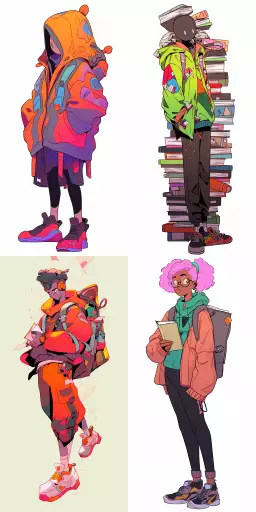Explore the Best AI Image Gallery

Pixels on Skin: Exploring the Intersection of AI-Generated Images and Art
The world of art is in a state of flux, driven by the relentless march of technology. One of the most transformative forces shaping this landscape is the emergence of AI-generated images. These creations, born from complex algorithms and vast datasets, are blurring the lines between human and machine creativity, sparking both excitement and controversy.
AI image generators, like DALL-E 2, Midjourney, and Stable Diffusion, have captured the imagination of artists, designers, and the general public alike. With a few prompts, users can conjure up stunning visuals ranging from photorealistic landscapes to fantastical creatures, opening up a realm of possibilities previously unimaginable.
The Impact on the Creative Industry
This technology has profound implications for the creative industry.
- Democratization of Art Creation: AI tools empower individuals with little to no artistic training to generate compelling visuals, democratizing the art-making process and fostering a wider range of creative expression.
- New Avenues for Collaboration: Artists can leverage AI as a collaborative tool, using it to explore new ideas, overcome creative blocks, or enhance their existing work. This opens up exciting possibilities for interdisciplinary projects and cross-pollination of artistic styles.
- Streamlining Design Processes: Industries like advertising, fashion, and game development can benefit from AIs ability to rapidly generate visual concepts, accelerating design iterations and reducing time to market.
Potential Uses Across Diverse Fields
The applications of AI-generated images extend far beyond the realm of fine art.
- Education: Students can use AI tools to visualize complex concepts, create interactive learning materials, and experiment with different artistic styles.
- Healthcare: AI can assist in medical imaging analysis, generating visualizations to aid in diagnosis and treatment planning.
- Architecture: Architects can leverage AI to explore innovative building designs, visualize spatial layouts, and generate realistic renderings.
Ethical Considerations and Future Trends
As with any powerful technology, the rise of AI-generated images raises ethical concerns that require careful consideration.
- Copyright and Ownership: Questions arise regarding the ownership of AI-generated artwork, as the creative process involves both human input and machine learning algorithms.
- Bias and Representation: AI models are trained on vast datasets that may contain biases, potentially leading to the perpetuation of stereotypes or unfair representations in generated images.
- Misinformation and Deepfakes: The ability to create highly realistic fake images poses a risk for spreading misinformation and manipulating public perception.
Looking ahead, we can expect continued advancements in AI image generation, with models becoming even more sophisticated and capable of producing hyperrealistic and nuanced creations.
The future likely holds a convergence of human creativity and AI-powered tools, where artists use AI as a powerful extension of their imagination to explore new frontiers in artistic expression.
It is crucial that we engage in thoughtful discussions and establish ethical guidelines to ensure that this transformative technology is used responsibly and for the benefit of society. The intersection of AI and art presents both exciting opportunities and challenges, ultimately shaping the future of creativity in profound ways.